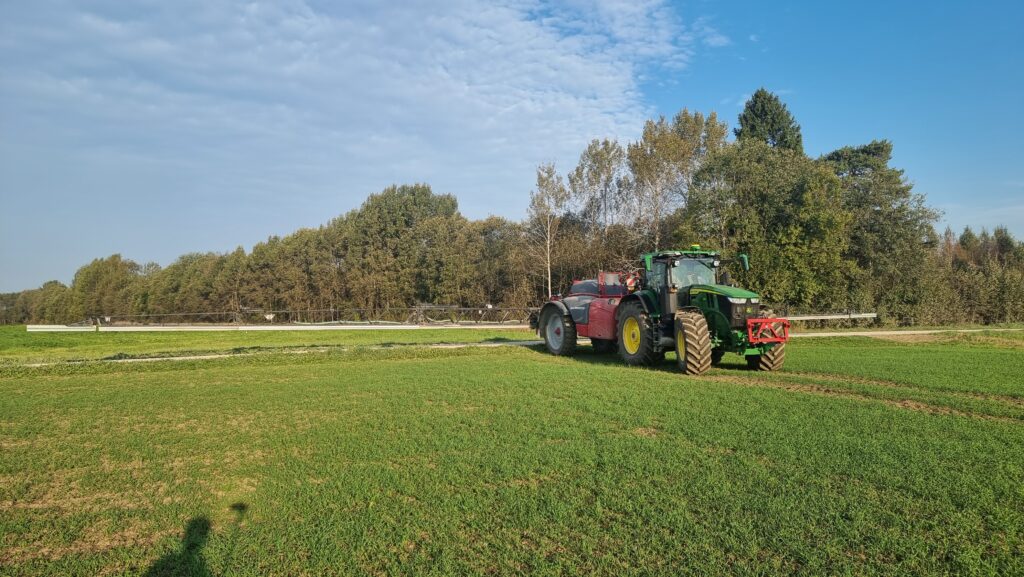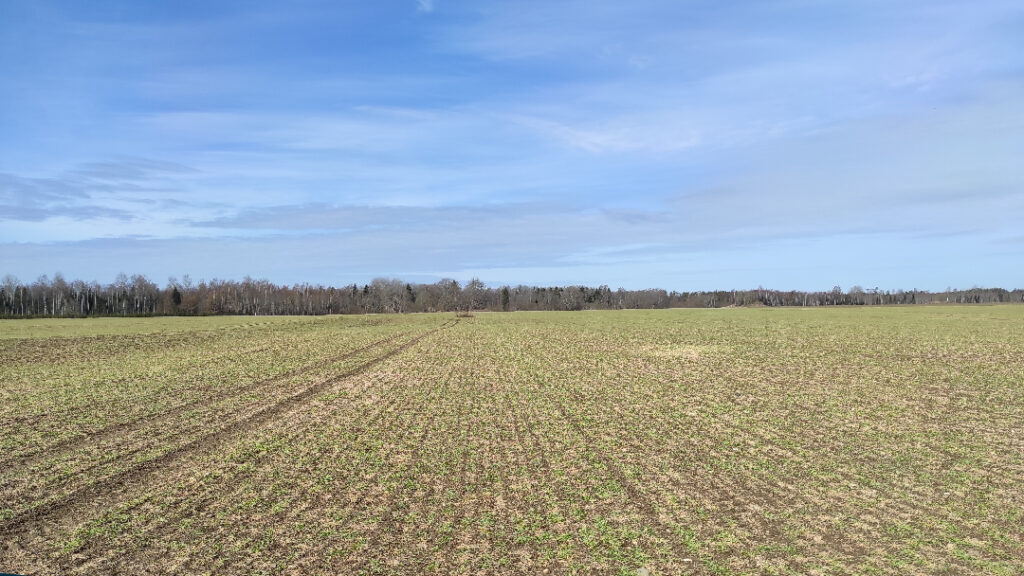For Years, I’ve Grown Foreign Varieties — and Here’s Why
I’ve been cultivating foreign crop varieties on my fields for years, and it’s been a deliberate choice. Generally, varieties from abroad tend to be more productive. Varieties bred in Estonia are more tolerant of our climate and soil, but that can mean they don’t yield top harvests. Farmers like myself, driven by the need to produce more, naturally gravitate towards the highest-yielding varieties 🙂 The results of crop competitions reflect this as well—records, second, and third places are consistently achieved with German, Danish, and Norwegian varieties. But perhaps there’s another way to bring value to an Estonian variety?
Visit my YouTube channel to watch my vlog
Watch 5 videos detailing the process so far – click here!
The Backstory
In July, I attended METK’s field day event (where the pastries, by the way, were delicious!). I took in the trial results, listened to expert talks, chatted with fellow farmers, and stopped by the winter wheat trials. There, I heard Reine (one of the scientist developing this variety) mention that the variety Perenaise is a milling wheat with excellent baking qualities. Now, if you think this moment filled me with an immediate sense of purpose, you’d be wrong. My thoughts were more along the lines of, “It’s a lovely, warm day—let’s plan for a barbecue tonight.”
The Idea Takes Shape in August
This idea became relevant in August. Over the summer of 2023, I had sown clover on one of my fields with my small-seed cover crop spreader. It wasn’t that I was particularly interested in growing clover, but I wanted to regroup some fields for better logistics, which required a short break from cereal cultivation. The early barley harvest yielded only 1.56 tons per hectare—a disappointing result. But had I known what 2024 would bring, I would have been thrilled with that yield!
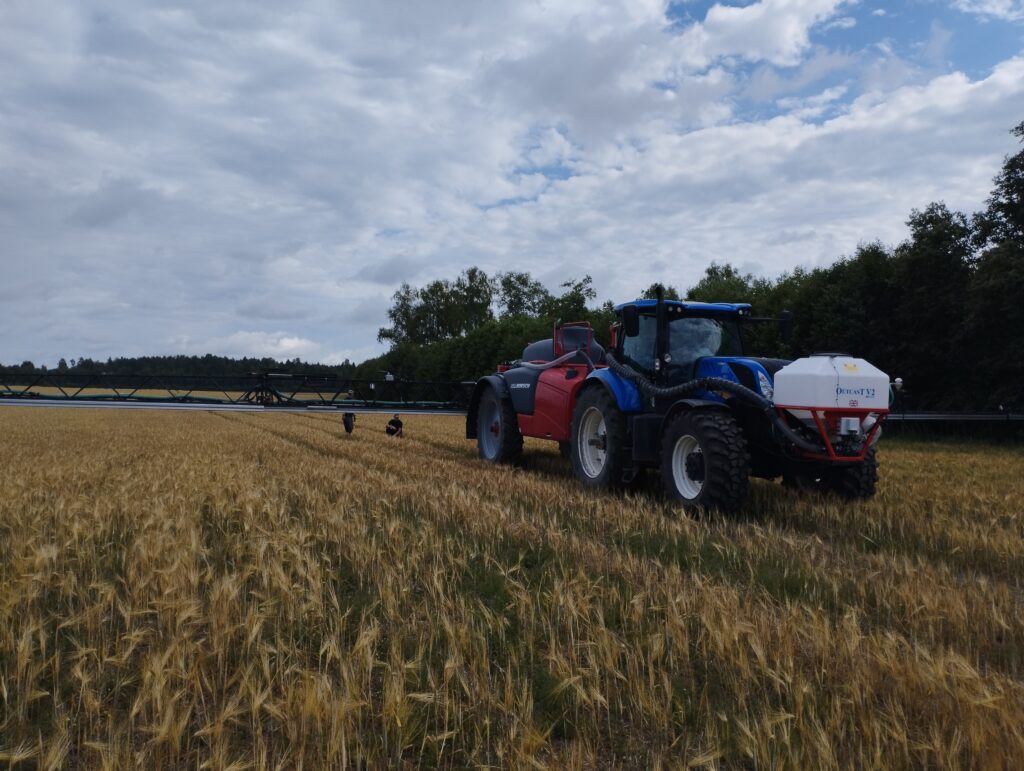
After the harvest, I waited for the clover to start growing, but due to the severe drought of 2023, only dandelions appeared. By May 2024, dandelions had overtaken the entire field—a beautiful sight for an average person, a painful one for a farmer. I mowed down the dandelions and avoided that field for a couple of months because, honestly, who wants to see a field full of weeds, however pretty and yellow? In August, I finally gathered the courage to check on the field and found that the clover had taken root and was growing well. Since I planned to sow winter wheat on the other fields in the same group, I decided to go ahead with the plan to sow Informer wheat after the clover.
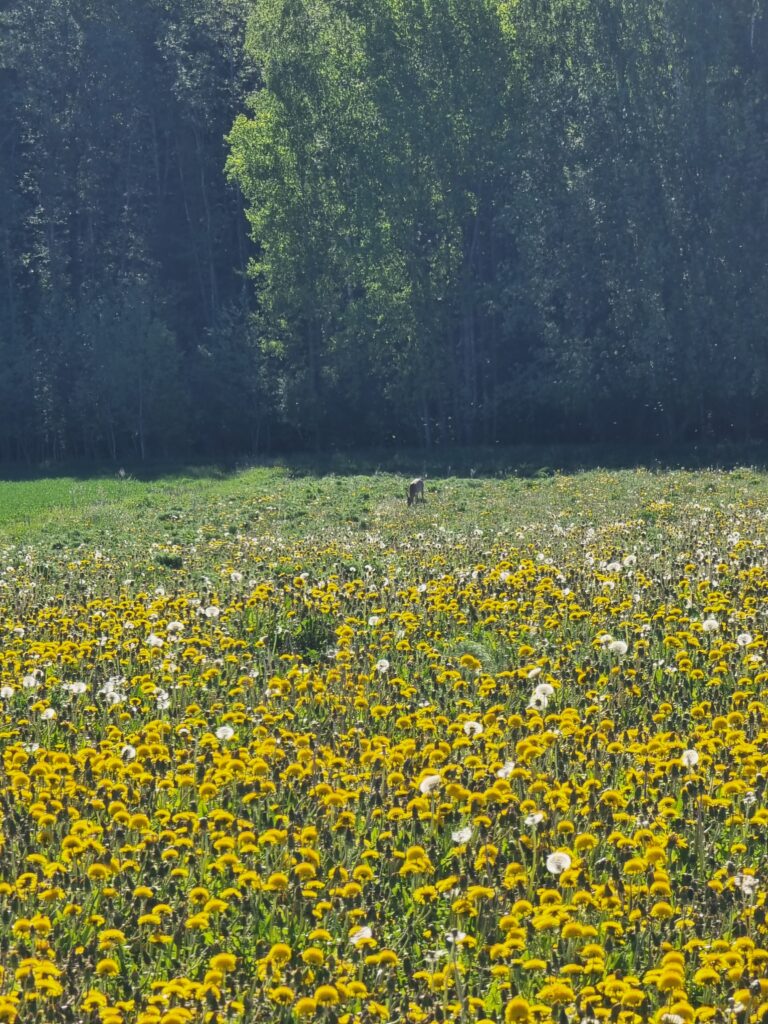
“Informer”? Isn’t That Not an Estonian Variety Like Perenaise?!
Indeed, I nearly went down the path of least resistance with Informer. However, around the same time as this plan, I had a revelation that, as a small business, traditional grain farming alone wouldn’t be enough to sustain me. I needed to move toward adding value to my production. This idea got an extra boost when a fellow member of the Young Farmers Union asked if I would consider milling my food wheat at his mill. At that time, I didn’t have any food wheat, but maybe I could grow it the following year?
That’s when I remembered what Reine had mentioned during the field day event. What could be more Estonian than a farmer named Tõnis, growing a food wheat variety developed by Estonian scientists on ancient Estonian farmland? With METK’s advice, I ordered the Perenaise seeds, and now it’s up to me to turn this into a success story—or perhaps demonstrate my amateurish attempt at growing wheat. Either way, it promises to be an exciting journey.
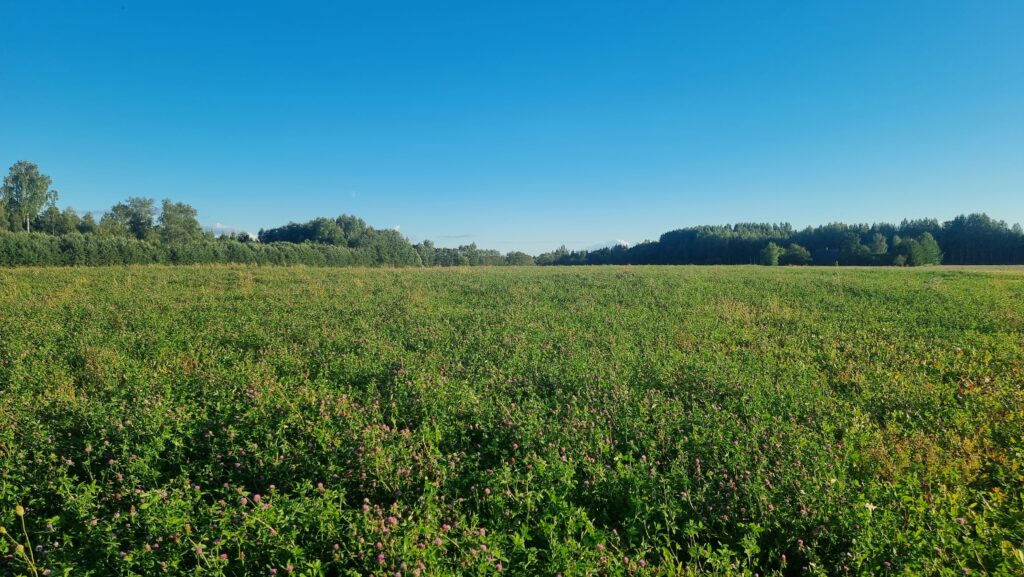
Matsi Field
I have only a few fields, and each one has a name to help me navigate and explain my location to my family. Some farmers use a numbering system, but I prefer to personify each field based on its owner (Ahto), cadastral name (Matsi), location (Mäe), soil type (Turba), or even the field’s feel (Vargamäe).
- Field Size: 8.5 ha
- Soil Type: Light loamy sand (objectively, the best soil for growing field crops)
- Nutrient Needs: Phosphorus (P) – medium to high; Potassium (K) – medium to high
Past Yields:
- 2023: Spring barley 1.58 t/ha 🙁
- 2022: Winter wheat 5.57 t/ha 😐
- 2021: Winter rapeseed 2.48 t/ha :/
- 2020: Winter barley 6.84 t/ha 🙂
- 2019: Field peas 3.33 t/ha 🙂
In terms of yield, it’s a decent field and seems suitable for growing winter wheat.
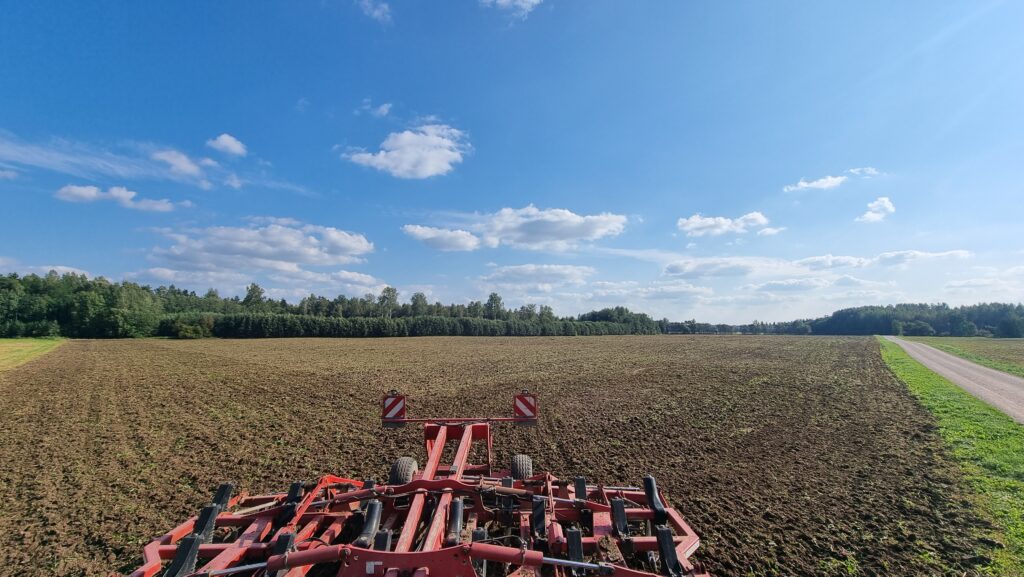
Field Work Log
- July 18, 2023 – Sowed red clover, 15 kg/ha, using the Techneat Outcast into standing crop.
- July 23, 2023 – Harvested early barley Hermann. A severe drought lasting from May 7 to July 2 hurt the crop badly, resulting in a yield of just 1.58 t/ha. It was disappointing, but worse was yet to come in 2024.
- May 2024 – My good friend and neighboring farmer complimented me on my beautiful dandelion field. I went to see it myself—only to find it terrible, with not a single clover in sight, just yellow blooms everywhere. On May 24, I hitched up the mower and mowed down the dandelions. That way, my neighbor couldn’t tease me, and I could feel some relief!
- August 13, 2024 – To my pleasant surprise, the clover had started growing vigorously.
- August 23, 2024 – Mowed the clover field to prepare it for cultivation.
- August 26, 2024 – A few days after mowing, I cultivated the field with the Horsch Terrano 6FX. The field surface wasn’t perfect, as some dandelion and clover clumps remained, leaving small mounds. Since I planned to cultivate once more, there was no need to fix everything in one go.
- September 3, 2024 – Fertilized the field with NPK 10-26-26, applying nutrients as follows: N 19 kg/ha, P 21 kg/ha, K 41 kg/ha. Depending on the yield potential (5t or 6t/ha), I plan to add more NPK as top-dressing in spring.
- September 4, 2024 – Cultivated the field once more, resulting in a much smoother surface.
- September 7, 2024 – Sowing day—the most important task and the field’s “birthday.” I sowed 400 viable seeds per square meter as recommended by METK.
- o even see the wheat in some places. Plus, the “friend” dandelion had started to grow again. Since I didn’t use glyphosate or plow this field, the weed cover would have been terrible over winter, casting doubt on the wheat’s ability to survive.
- October 28 – Autumn disease control with fungicide Input 0.5 l/ha. With warmer and longer autumns, plant diseases are on the rise. Patches of brown rust and powdery mildew are becoming more common. Following METK’s integrated plant protection principles, I decided that a half-dose of fungicide was necessary and reasonable, also offering protection against snow mold. My own experience and trials with autumn fungicide show that untreated areas often have 50%-100% vegetation loss due to severe damage.
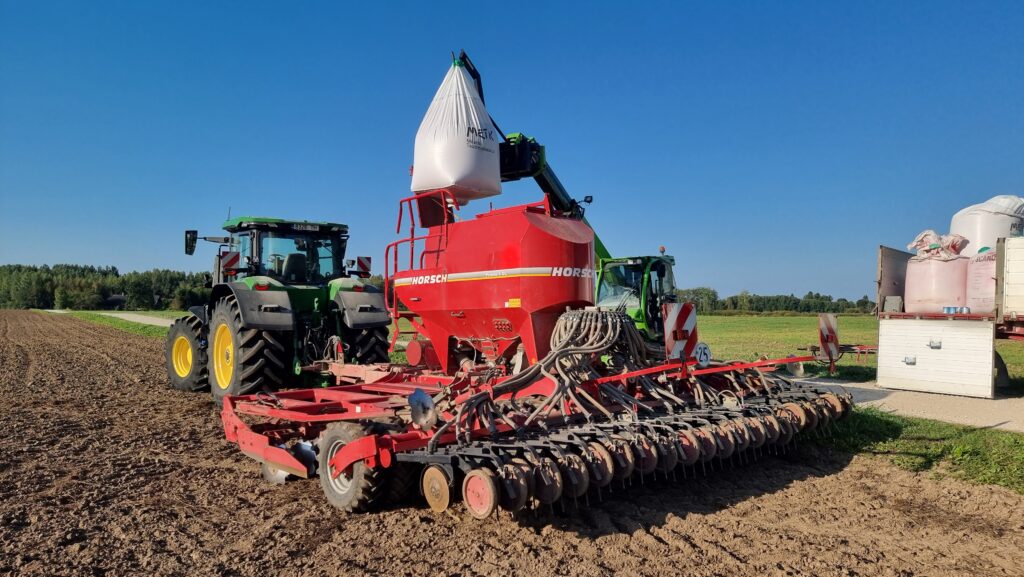
November 3, 2024
Today, all the work is hopefully done, and the field is ready for winter. The weather forecast is uncertain, with predictions for snowless holidays. For farmers, the ideal situation is for the ground to freeze first, followed by a protective snow cover. Then, the field can “tick over” until spring. We’ll see what the next six months bring!
